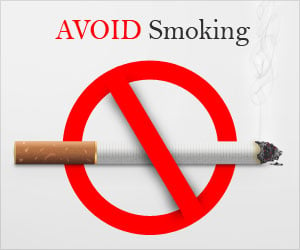Placing graphic health warning labels on cigarette packages may prevent some adults from purchasing tobacco products, reveals a new study.

‘Placing graphic health warning labels on cigarette packages may prevent some adults from purchasing tobacco products.’
Read More..




Conducted in a one-of-a-kind laboratory that replicates a convenience store, the study found that the effects of graphic health warning labels on adult smokers' purchase of cigarettes depend on their level of nicotine dependence. Such labels typically include an image of a tobacco-caused illness such as oral cancer in gruesome detail, and words warning about the health consequences of smoking.Read More..
Smokers with lower nicotine dependence were less likely to purchase cigarettes when graphic health warnings were present, while the graphic labels had no effect on smokers with heavy nicotine dependence.
"By reducing the likelihood of cigarette purchases at convenience stores among less-addicted smokers, graphic health warning labels could contribute to a range of public health benefits," said William G. Shadel, lead author of the study and a senior behavioral scientist at RAND, a nonprofit research organization. "But the graphic warning labels probably are not going to change the cigarette purchasing habits of people who are more thoroughly addicted to the nicotine in cigarettes."
More than 100 countries have regulations mandating that some type of graphic health warning labels on cigarette packages. Graphic health warning labels were scheduled to be introduced on cigarette packages in the U.S. in 2012, but have been delayed by legal actions. The U.S. Food and Drug Administration is expected to propose final recommendations for graphic health warnings by March 2020.
For the RAND study, about 300 adult smokers visited the RAND StoreLab -- a replica of a convenience store -- and purchased up to $15 worth of items. Almost all participants had said they regularly purchased tobacco at convenience stores.
Advertisement
The other half of adult visitors to the convenience store lab shopped under conditions where the cigarette packages on display showed typical words-only warnings like "Smoking causes lung cancer, heart disease, emphysema, and may complicate pregnancy" and "Cigarette smoke contains carbon monoxide."
Advertisement
Among participants reporting a high-level of nicotine addiction, cigarettes were purchased at close to the same rate as when graphic warning labels were displayed on packages.
"Less-dependent smokers, who often are light or intermittent smokers, are a large and growing segment of tobacco users," Shadel said. "The graphic warning labels may be one way to prevent this group, which includes a lot of younger people, from becoming long-term users of cigarettes."
Source-Eurekalert















